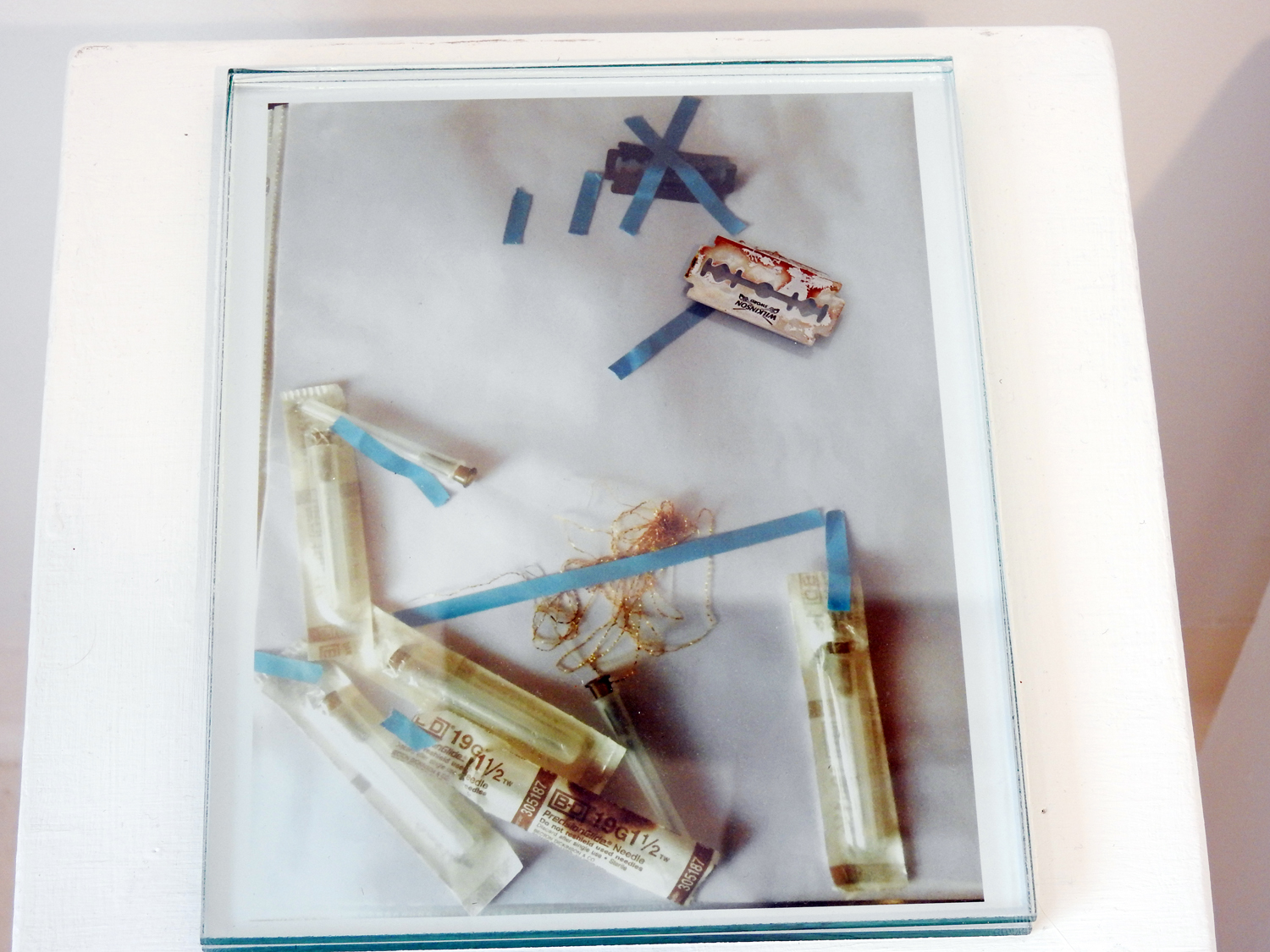Sites of Absence
The following text was written by Lital Dotan for the exhibition ‘Sites of Absence’ presented at Glasshouse September 2016
Sites of Absence
Julie Tolentino, Maria Jose Arjona, Rebecca Patek & Camila Cañeque
‘Sites of Absence’ presents performance devoid of its spectacle nature. It highlights the frames of pre and post performance works by genuine voices in contemporary performance, providing an observation on the remains or leftovers from a powerful presence. A floor-plan, a charcoal sketch, a social media feed, a wrapped journal exploding with gathered materials- each of these objects are exhibited as traces to the essential <code> of performance. Gifting a rare intimate view on the individuality of process and its fluid archiving.
If performance art is an immersive experience, touching the process of its becoming, the subtleties of its not yet and no longer- is as intimate as it gets for artists. The works on display invite audience into the aftermath of what has become unified under a seemingly familiar title- "performance". And sometimes- "practice".
DOUBLE HAPPINESS or NOTHING, 2013 by Julie Tolentino with Stosh Fila aka Pigpen
‘Cry of Love’, Julie Tolentino (2010/2016)
A True Story About Two People, Julie Tolentino (2006)
Julie Tolentino refers to her body as a performance archive for both herself and her peers. Since the late 80's Tolentino uses a blade to “mark” the beginning of each of her performances on her body, which then serves as an accumulated site of processional beginnings. The print from ‘Cry of Love’ (2010) is a documentation of Tolentino’s tools for an ongoing beginning; framed with a new blade, it references the potential of this performance to be activated.
Compass, Maria Jose Arjona (Pre-performance sketch, 2009)
Compass, Maria Jose Arjona (Pre-performance sketch, 2009)
Maria Jose Arjona presents her performance ‘Compass’ , originally performed during a residency at the Watermill Center in 2009. Walking a circular line in the sand for 8 hours Arjona made the intention to balance the straight lines of the adjunct building. Through the poetic gesture of walking an infinite form she turns a finite architecture into a sensory event, turning the focus into the building’s relationality.
Rebecca Patek, New York Times (screenshot, 2015)
Rebecca Patek, New York Live Arts (screenshot, 2016)
Rebecca Patek‘s often provocative works recently tend to swirl well beyond the scheduled performance. Through tracing correspondences, social media posts and photography she creates a documentation of incidents that frame her work with the stigma, assumption, aggression and fear often surrounding female artists making sensitive work. The NY Times, MoMa, theater festivals and curators are all involuntary participants in this dance. Suggesting a flip in the roles, could it be that the institutions themselves are the subject and object of Patek’s performance?
Treatments, Camila Cañeque (installation view, 2016)
Treatments, Camila Cañeque (sketch, 2016)
Treatments, Camila Cañeque (sketch, 2016)
‘Treatments’ , Camila Cañeque’s ongoing performance, offers refuge for guests at her virtual home, constructed from a series of events. Lucky participants experience the live “room performance”, not always knowing; anyway they are mostly waiting.
At a time when "immateriality" is a common term in contemporary art, this exhibition attempts to do the opposite. To frame performance. To trace its empowered components. To display its bare roots.
-Lital Dotan










